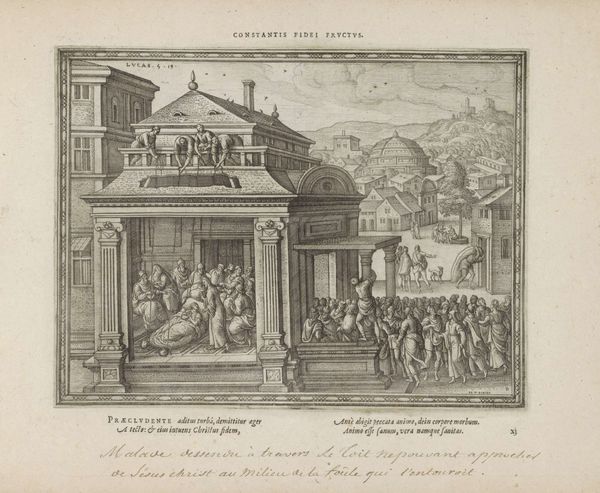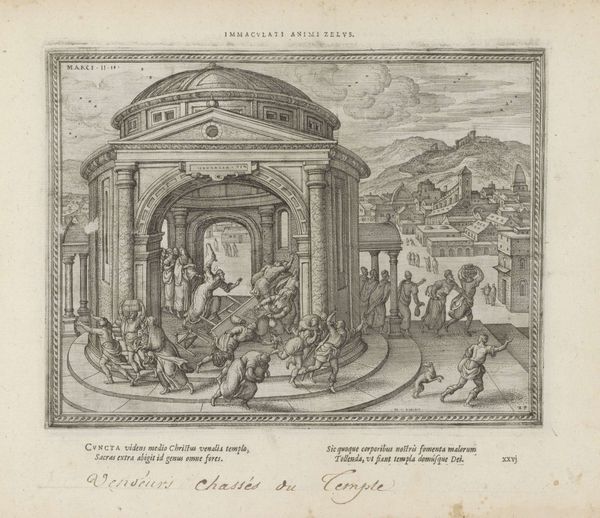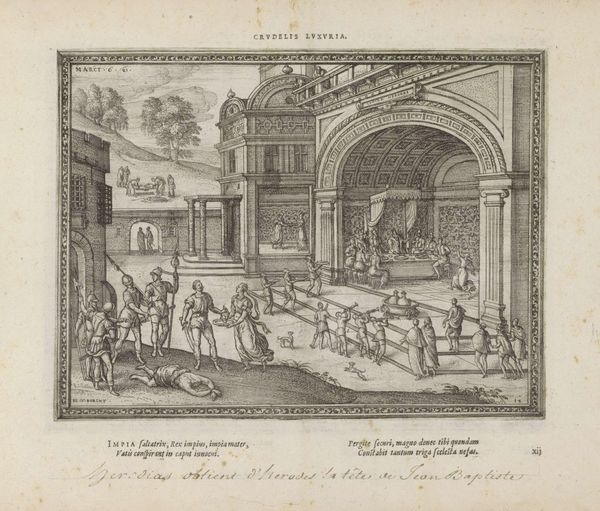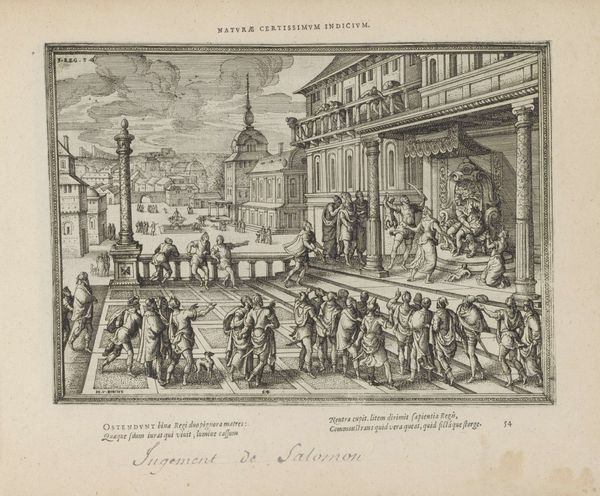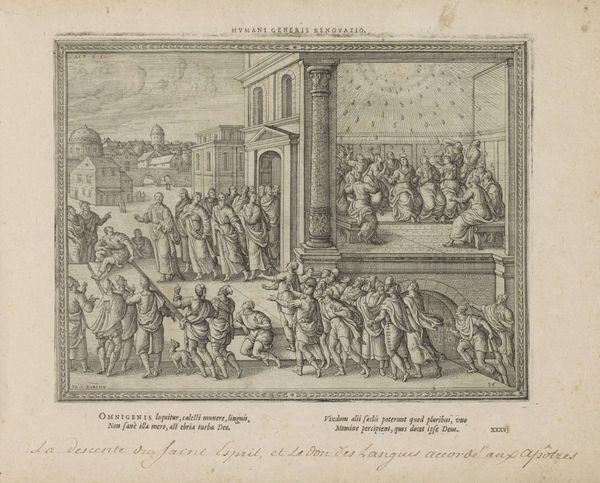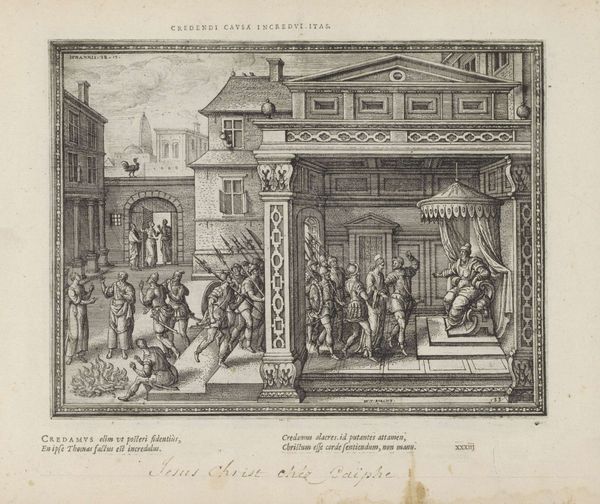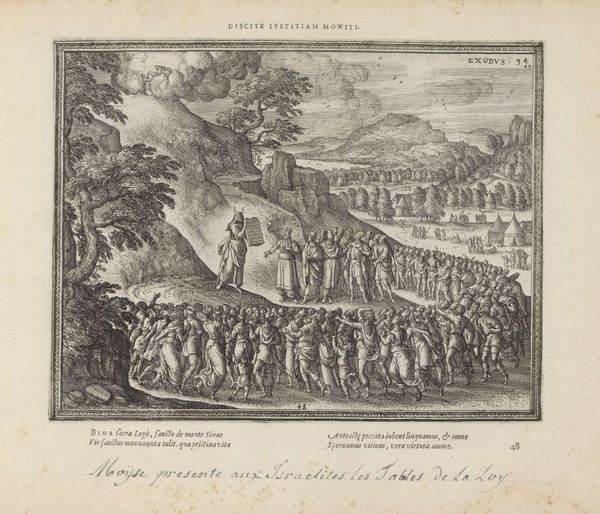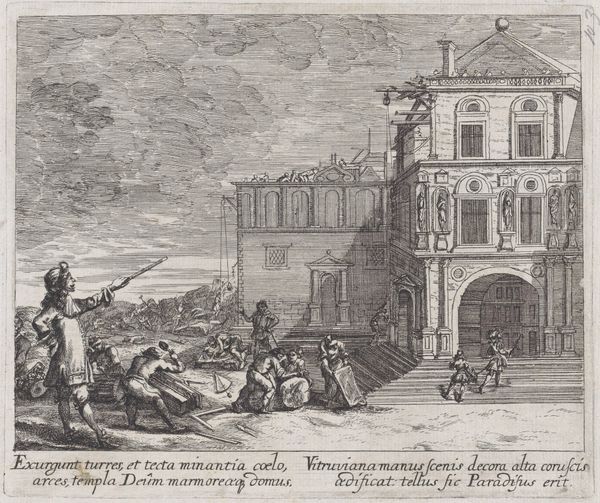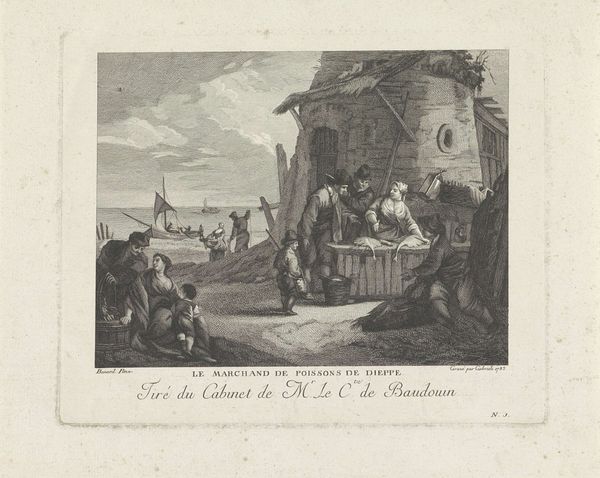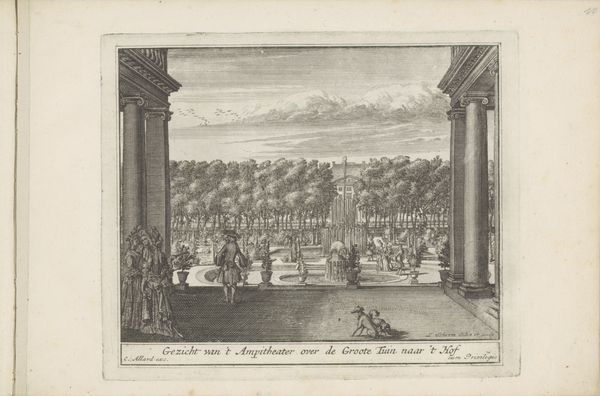
print, engraving
#
narrative-art
#
baroque
# print
#
figuration
#
history-painting
#
engraving
Dimensions: height 189 mm, width 246 mm
Copyright: Rijks Museum: Open Domain
Editor: Here we have "The Parable of the Wise and Foolish Virgins," an engraving by Pieter van der Borcht, created sometime between 1582 and 1613. It's incredibly detailed, almost overwhelmingly so. What do you see in this piece, especially given its biblical subject matter? Curator: What strikes me is how the print visualizes the anxieties surrounding piety and access to salvation within a specific socio-political context. The parable itself becomes a site of negotiation, reflecting the concerns of the Reformation era regarding individual agency and divine grace. Do you notice how the "wise" virgins are actively engaged, holding their lamps, while the "foolish" ones seem almost languid or excluded? Editor: I do, it's like there's a real emphasis on being prepared, almost a moral judgment passed on those who aren’t. Curator: Exactly. Think about the period – the late 16th and early 17th centuries. This was a time of intense religious upheaval. Van der Borcht presents us with not just a religious scene, but a commentary on societal expectations of women. Their roles, their vigilance, their very access to grace hinges on their "preparedness," which, of course, had very real-world implications for their social standing. What does the architectural setting suggest to you? Editor: It feels almost like a stage, highlighting the performative aspect of faith. Curator: Precisely! The artist uses architectural space to create social hierarchy, and also to denote who’s “inside” and who’s “outside,” and more broadly those divisions based on actions. Does that resonate with what you see happening today, maybe thinking about who gets access to resources or positions of power? Editor: I see that parallel, for sure. Thanks for drawing those connections! Curator: Of course! Examining these older artworks isn't only about the past. It’s about illuminating enduring patterns and tensions, enabling us to see contemporary power dynamics with a new lens.
Comments
No comments
Be the first to comment and join the conversation on the ultimate creative platform.
